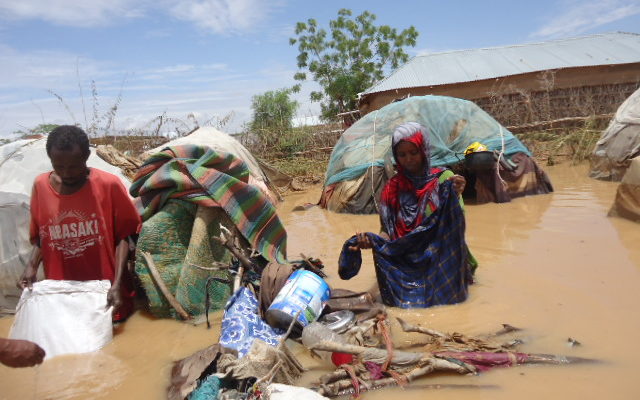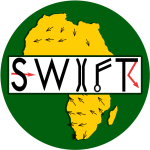Global investment in African weather forecasting is urgently needed to meet the UN Sustainable Development Goals.
African lives and livelihoods are directly impacted by weather- and climate-related risks. Strengthening the capacity of African meteorological services holds transformational potential for improving the continent’s climate-resilience, protecting lives and livelihoods, and delivering socio-economic benefits in the coming decade.

Published in partnership with the Forecast-Based Preparedness Action (ForPAc) programme, our recent policy brief explores the value of international investment in African weather forecasting science and communication, including what can be achieved on a 5-10 year timeframe, key steps needed to realise the socio-economic benefits of improved weather forecasting across Africa, and challenges to wider implementation.
Key messages
Key messages of the policy brief include:
- Climate change will be felt through increasing frequency and severity of hazardous weather. A future response to climate change is dependent on advances in weather forecasting now.
- Strengthening national and international meteorological and climate science capacity has the potential for transformational change and improved climate-resilience across the African continent.
- Forecasting improvements on all timescales – hourly to seasonal – will enable regions to better predict extreme events before they occur, a vital step to providing economic, societal and environmental security for the most vulnerable.
- Further research is required to deliver adequate performance of forecasting systems, but significant improvements in accuracy and relevance are within our reach. Training programmes, focused on capacity building in the use and manipulation of data, and the application of forecast products, should be a key priority for international agencies such as WMO and EUMETSAT.
- Co-production of weather and climate services is needed to inform decision-making in key economic sectors (e.g. agriculture, energy, healthcare, disaster management), but depends on meteorological agencies having the tools and know-how to meet decision-makers’ needs.
- Systematic and impact-based forecast evaluation is critical to forecast improvement, to economic sustainability of services, and for effective forecast use.
- Partnership between academic and operational sectors is a tremendous opportunity for long-term sustainability of scientific and operational improvements.
- Weather forecasting services should be economically self-sufficient, but core funding, led by international agencies, should be directed to the long-term investment in and maintenance of observational networks.
Ultimately, international investment today is critical to realising the socio-economic and environmental benefits of improved weather forecasting across the African continent. The recommendations outlined throughout our briefing note highlight key steps needed to support African countries in achieving the UN Sustainable Development Goals by building climate-resilience, protecting lives and livelihoods, and delivering significant economic benefits in the coming decades.
Paper information
Youds, L., Parker, D. J., Adefisan, E. A., et al. (2021) The future of African weather forecasting. GCRF African SWIFT & ForPAc SHEAR Policy Brief. https://doi.org/10.5518/100/67
Acknowledgements
This work was supported by UK Research and Innovation as part of the Global Challenges Research Fund, Grant Ref: NE/PO21077/1 and the Science for Humanitarian Emergencies and Resilience (SHEAR) programme, funded by the UK Natural Environment Research Council (NERC), the Economic and Social Research Council (ESRC) and the UK Department for International Development (DfID), grant numbers NE/P000673/1, NE/P000568/1, NE/P000428/1 and NE/P000444/1.
Authors
Lead authors: Lorraine Youds (NCAS, University of Leeds), Douglas Parker (University of Leeds)
Co-authors in alphabetical order: Elijah Adefisan (ACMAD and FUTA), Philip Antwi-Agyei (KNUST), Caroline Bain (UK Met Office), Emily Black (NCAS, University of Reading), Andrew Dougill (University of Leeds), Linda Hirons (NCAS), University of Reading), Victor Indasi Savatia (ACMAD), Benjamin Lamptey (Cheney Visiting Professor of Meteorology at the University of Leeds), Fionne Marshall (UK Met Office), John Marsham (NCAS and University of Leeds), Thorwald Stein (University of Reading), Christopher Taylor (Centre for Ecology and Hydrology), Martin Todd (University of Sussex), Emma Visman (Centre for Ecology and Hydrology), Steven Woolnough (NCAS, University of Reading)
